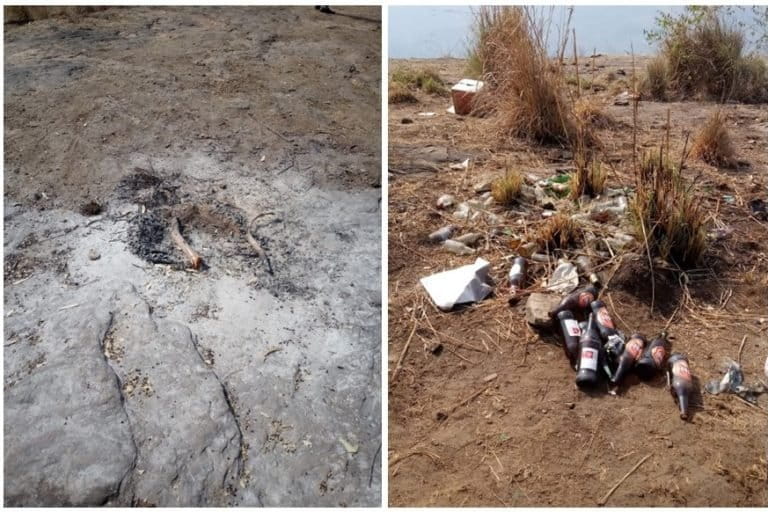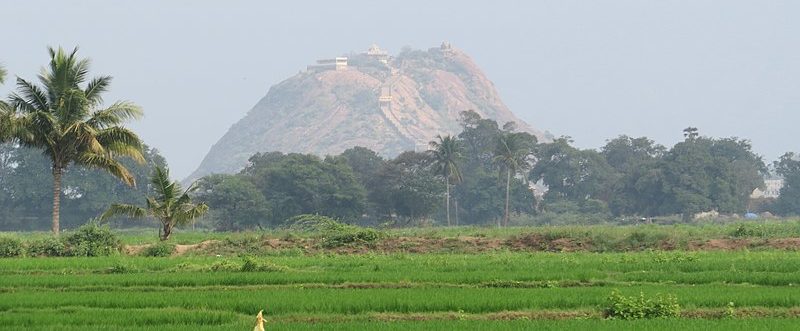- Recurring wildfires have caused significant and severe damage to wildlife, forests and wetlands in the Pallani hills where the hill station Kodaikanal is located.
- A 16-year-old student from Kodaikanal visited six villages in the area to understand causes, perspectives and solutions to this recurring problem.
- In this commentary, the student offers some ideas to citizens to take action by learning forest routes and fire-prone areas through GIS, creating awareness, regularly checking the quality of the electrical cables in the forest, providing water resources and verifying that forest areas receive proper signals.
- The views in the commentary are that of the author.
The Palani Hills, located in the east of the Western Ghats, is about 80 km wide and 25 km long. Approximately 71 percent of the Palani Hills is covered by shola forests and grasslands. Holding more than 5000 acres of wetlands and beyond 200 animal species, this hill station truly befits the name, “The Princess of Hills”. However, since the past few decades, recurring and threatening wildfires have caused significant and severe damage to wildlife, forests and wetlands in the region. Since there have been no recorded cases of explicit impacts of wildfires on wildlife, the issue is often taken lightly without thoughtful consideration. However, wildfires not only harm flora (trees, herbs, grasslands, and so on), but they also create a long-term impact on the lives of existing fauna.
One perilous fire breakout that alarmed the citizens of the Palani Hills was recorded recently, on March 13, 2022. The massive wildfire caused large swaths of forest land to be reduced to embers within days. Although forest departments and police officials have been looking for solutions to forest fires and examine the cause of the recurring forest fires, fires continue to take place frequently that excessively damage forests and grasslands. The concerned government departments are indeed enforcing acts to prevent such breakouts in the future, however, citizens too can have a role to play in this.
As a student of Kodaikanal International School, I planned to examine the details and the root causes of forest fires in Kodaikanal by visiting nearby villages and communities and understand their perspectives of the problem. I wanted to interact with local rural residents, listen to their opinions of forest fires, and give them a chance to express their thoughts on the issue.

During my field trip to villages in Kodaikanal, I came across two different individuals and their distinct and unique perceptions of wildfires in their local region: a forest department official and the founder of a local NGO. From them, I wanted to understand whether the area has been affected by a forest fire recently and if it has, what were the effects. I also had questions about measures taken by the forest department to tackle forest fires and the protocol and responsibilities for the same. I also wanted to understand from them what were on the main causes of forest fires and solutions as well as their perspectives on the impact of fires on forest and grasslands.
While traveling around the sub-regions of Kodaikanal, I soon understood that each area has had a distinct relationship with forest fire, and learned from a forest range officer, who wishes to remain anonymous, that there was an undiscovered history behind forest fires in the Palani Hills. He said, “Back in the day, our ancestors would have spent most of their days inside forests, interacting with and exploring the flora and fauna that were present there. They would have rarely cut down any trees or started a fire for any reason because it would have been like a second home to them, and nobody would want to harm their home, would they? Even if there was a forest fire that they heard of, their entire community would rush to fight the fire using the available sources. But now, everything has changed. We barely take a second look at forest fires, simply ignore if we heard there is a fire nearby, and just use the forests for our own benefits; to cut down trees, crop plants, and so on. Right now, we would rush to stop the fire selfishly only if we heard there is a fire in our house or our farmland. So, I think that only if we change this mindset, we can stop forest fires from happening in the future and help preserve our nature from future harm.”
To inspect wastelands and previously impacted grasslands in Kodaikanal, I visited fields from four different sub-regions: Machoor, Panaikadu, Perumal Malai, and Pallangi-Kombai. Soon, after reaching the secluded area in Pallangi, I winced, and stood aghast at the empty beer bottles that surrounded the region. There existed several campfires that weren’t exerted yet, and extremely dry and withered lemongrass, just waiting there, ready to be blazed by the scorching sun.

I soon learnt that in Kodaikanal, tourists and local villagers often come to secluded areas to camp, gather, and party. Before leaving the place, they often leave their leftover beer bottles and cigarette buds all over the area. However, a small mistake can play a huge role in creating a forest fire. For instance, small pieces of broken beer bottles can act as a magnifying glass on a sunny day. When the sun’s rays get to a certain angle, it magnifies and intensifies the heat hot enough to light the nearby lemongrass and cause a major forest fire within hours. Similarly, leaving/throwing a cigarette bud in the buffer zone of a forest is also likely to spark a fire in a forest within no time.
Although the research and interviews I conducted had taught me abundant knowledge about the history of wildfires, there remained, still, an important question in my head: “What measures can be taken to solve the wildfire issue?” To answer this question, I organised an interview with the founder of a local NGO, who also wishes to remain anonymous. He said, “The wildfire issue may not come to an end all of a sudden, because each forest fire will have a different history, and each will have a different solution. However, implementing some measures can help to stall this crisis in the upcoming years. One such measure that can be taken is mapping out the fire-prone areas using GIS, short for Geographic Information System. GIS is a system that develops, maintains, analyses, and maps all forms of data which connects data to a map by combining location data with several forms of descriptive data. Using the help of GIS, we can map out areas that have been previously impacted by forest fires, so that we can identify the locations that are the most prone, and protect them by prohibiting tourists or villagers from visiting this area without permission or surveillance.”
He added, “Another action that even citizens can take is, spreading awareness about the impacts of forest fires to rural communities. Students like you can create a small documentary in the local language, Tamil, that briefly describes how forest fires impact humans, animals, and the grasslands. By doing this, communities can gain a sense of stewardship towards protected lands, and would come together to stop the fire before it spreads too much.”
Some of the learnings I took away from my field visit were that the forest department in partnership with electricity supplies can implant reliable cable connections in the forest to ensure that the wire is stable during all seasons, and doesn’t wear down during extreme weather. They can also provide water resources near damp forest lands to make sure that the residents have accessibility to exert fire. Additionally, they can make sure that forest regions receive proper signals so that the community can immediately call for help from the forest and fire service departments.
I also learned how students like me can contribute – we can learn GIS mapping techniques, and be informed about the forest travel routes so that even students can offer help and fight the fire in case of emergencies or tragic accidents. Along with the forest department, we, the students, can also create awareness through posters, fliers, and short movies to show the villagers the negative effects of forest fires.
From this short field trip to the nearby communities in Kodaikanal, I learned more about forest fires than I did from my research derived from articles and websites on the crisis. Wildfires are both human-made and natural, however, man-made forest fires must be avoided and stopped. As a result of the recurring wildfires, several bird and animal species are being endangered, vegetable and fruit crops are being destroyed, and carbon dioxide is released excessively as a part of the blazing forests. In order to stop the crisis, it is critical to change our mindsets. We must change our attitude on forests and grasslands, and only then, will we be able to truly appreciate our natural resources and not destroy our forests relentlessly. Next, we, the citizens, must take action on the matter; learn the forest routes and fire-prone areas through GIS, create awareness campaigns and display the importance of forests to the people, make sure that we regularly check the quality of the electrical cables in the forest, and finally, provide water resources and verify that forest areas receive proper signals.
Read more: All forest fires may not be bad fires
The author is Grade 10 student of Kodaikanal International School. He travelled to six villages in Kodaikanal to understand the issue of forest fires and how they can effectively be managed.
Banner image: A view of Palani hills from a nearby highway. Photo by Vinayaraj/Wikimedia Commons.
